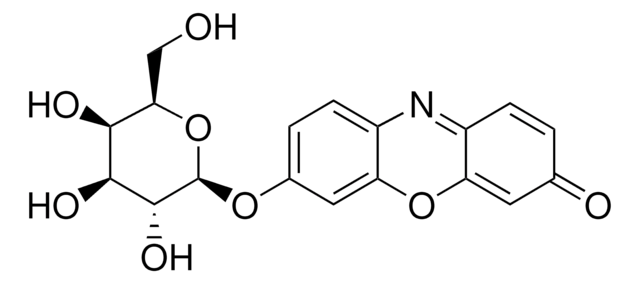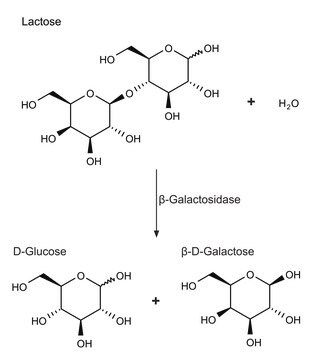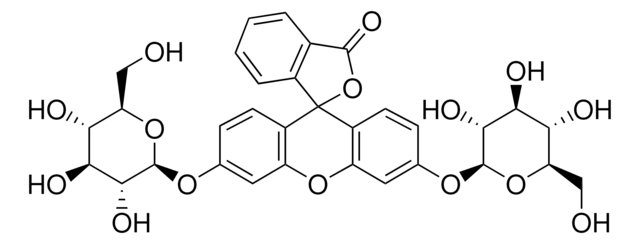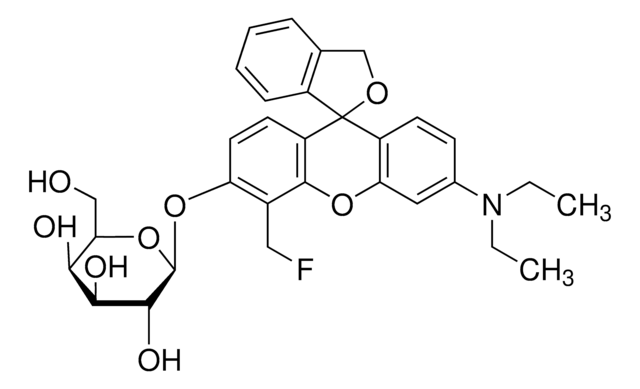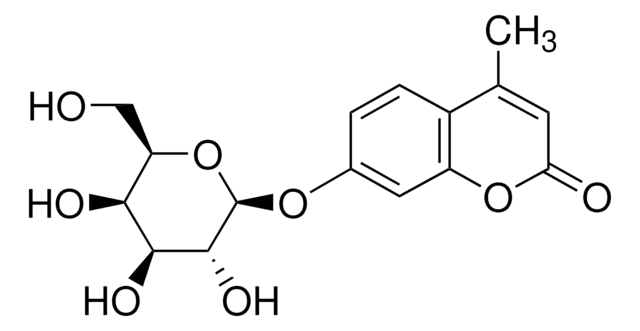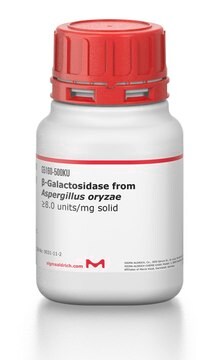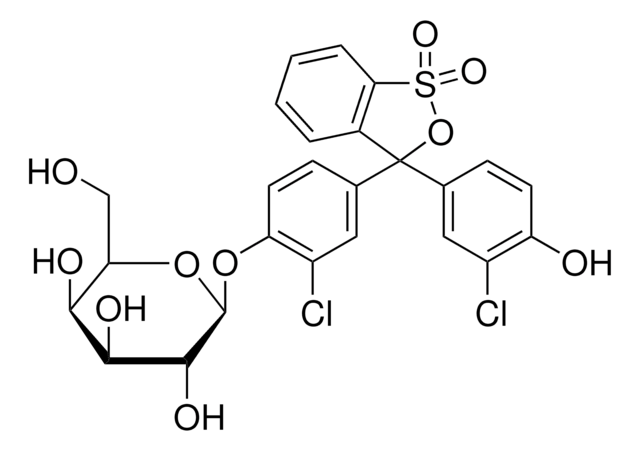About This Item
おすすめの製品
アッセイ
≥98% (HPLC)
品質水準
形状
powder
溶解性
methanol: 20 mg/mL, clear, yellow
保管温度
−20°C
SMILES記法
OC[C@H]1O[C@@H](Oc2ccc3c(Oc4cc(O[C@@H]5O[C@H](CO)[C@H](O)[C@H](O)[C@H]5O)ccc4C36OC(=O)c7ccccc67)c2)[C@H](O)[C@@H](O)[C@H]1O
InChI
1S/C32H32O15/c33-11-21-23(35)25(37)27(39)30(45-21)42-13-5-7-17-19(9-13)44-20-10-14(43-31-28(40)26(38)24(36)22(12-34)46-31)6-8-18(20)32(17)16-4-2-1-3-15(16)29(41)47-32/h1-10,21-28,30-31,33-40H,11-12H2/t21-,22-,23+,24+,25+,26+,27-,28-,30-,31-/m1/s1
InChI Key
ZTOBILYWTYHOJB-WBCGDKOGSA-N
類似した製品をお探しですか? 訪問 製品比較ガイド
アプリケーション
生物化学的/生理学的作用
基質
関連製品
保管分類コード
11 - Combustible Solids
WGK
WGK 3
引火点(°F)
Not applicable
引火点(℃)
Not applicable
個人用保護具 (PPE)
Eyeshields, Gloves, type N95 (US)
適用法令
試験研究用途を考慮した関連法令を主に挙げております。化学物質以外については、一部の情報のみ提供しています。 製品を安全かつ合法的に使用することは、使用者の義務です。最新情報により修正される場合があります。WEBの反映には時間を要することがあるため、適宜SDSをご参照ください。
Jan Code
F2756-25MG:
F2756-BULK:
F2756-1MG:
F2756-5MG:
F2756-VAR:
試験成績書(COA)
製品のロット番号・バッチ番号を入力して、試験成績書(COA) を検索できます。ロット番号・バッチ番号は、製品ラベルに「Lot」または「Batch」に続いて記載されています。
この製品を見ている人はこちらもチェック
ライフサイエンス、有機合成、材料科学、クロマトグラフィー、分析など、あらゆる分野の研究に経験のあるメンバーがおります。.
製品に関するお問い合わせはこちら(テクニカルサービス)